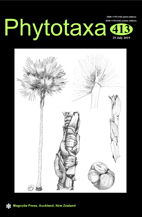Abstract
Gastrodia Brown (1810: 330; Gastrodieae, Epidendroideae) is a mycoheterotrophic leafless genus that is distributed throughout the temperate and tropical regions of Asia, Oceania, Madagascar and Africa (Cribb et al. 2010, Hsu & Kuo 2010, Suetsugu et al. 2018a) and characterized by fleshy tubers, united tepals and two mealy pollinia that lack caudicles (Cribb et al. 2010, Hsu & Kuo 2010, Suetsugu et al. 2018a,b). Several recent studies have re-examined the diversity of Gastrodia in many Asian countries (Hsu et al. 2012, 2016, Ong & O’Byrne 2012, Tan et al. 2012, Suetsugu 2013b, 2014, 2016, 2017, Huang et al. 2015, 2018, Tsukaya & Hidayat 2016, Metusala & Supriatna 2017, Pelser et al. 2016, Suetsugu et al. 2018a,b). As a result, the genus now comprises ca. 100 species, thereby making it the most diverse mycoheterotrophic genus (Hsu et al. 2016, Suetsugu 2017, Suetsugu et al. 2018a,b). However, it is likely that the distribution and diversity of Gastrodia species remain underestimated because plants are easily overlooked in the field due to their short flowering seasons and small size (Hsu et al. 2016, Suetsugu 2017, Suetsugu et al. 2018b).

